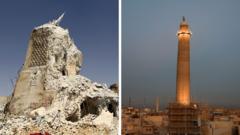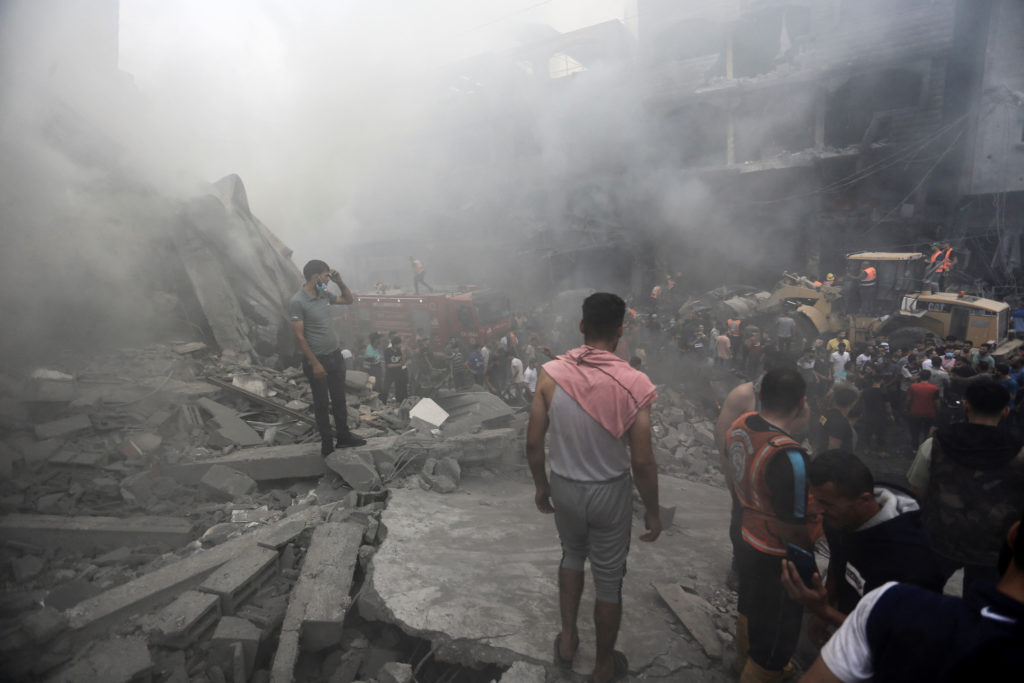In a triumphant return to cultural heritage, Mosul, Iraq, is witnessing the reopening of several historic buildings, including churches and mosques, after years of destruction wrought by the Islamic State (IS) group. This initiative is spearheaded by Unesco and represents a crucial step in restoring the city’s identity, which once thrived as a symbol of multicultural coexistence.
The project commenced shortly after IS's defeat in 2017, which marked the end of a dark period during which Mosul was known for violence and extremist ideologies. Unesco’s director-general, Audrey Azoulay, along with Iraqi Prime Minister Mohammed Shia' al-Sudani, attended a ceremonial reopening event, emphasizing the importance of cultural restoration to the local community.
During its occupation, IS not only demolished physical structures like the leaning al-Hadba minaret—an emblem of Mosul—but also fractured the social fabric that promoted harmony among various religious and ethnic groups. The aftermath was not just a city in ruins; it was a community stripped of trust and unity. Mosul photographer Ali al-Baroodi vividly recalled the devastation he encountered in 2017, describing the city as a ghost town, with familiar landmarks replaced by crumbling debris.
The challenging yet essential task of reconstruction began under the guidance of Unesco, which secured $115 million to fund the efforts, with a generous portion contributed by the United Arab Emirates and the European Union. Central to this mission was Father Olivier Poquillon, a Dominican priest leading the restoration of the convent of Notre-Dame de l'Heure. He emphasized the importance of rebuilding trust among the community, noting that without it, the restored buildings would remain targets for future conflict.
The project involved the restoration of 124 historic homes as well as iconic structures like al-Tahera Church, the Dominican convent, and the al-Nuri mosque complex. Maria Rita Acetoso, chief architect overseeing the endeavor, believes that cultural restoration can also serve as a catalyst for job creation and community healing. Education is at the forefront of this revitalization, as over 1,300 local youth received training in traditional skills and approximately 6,000 new jobs were created, with a significant focus on engaging women in the rebuilding efforts.
As these once-destructive narratives fade, the bells of al-Tahera Church ring anew, marking the resurgence of faith, kinship, and stability in Mosul. The heartfelt testimonials from residents like Mustafa and Abdullah, who returned to homes that had been in their families for generations, reflect a shared sense of hope.
Despite lingering scars from the past, the reconstruction of Mosul's Old City, with its rich tapestry of interwoven cultures, signals a determined stride toward healing and collaboration. As Ali al-Baroodi beautifully articulates, witnessing this rebirth is akin to seeing a once-lifeless entity come back to life—renewed and vibrant, embodying the true spirit of Mosul.





















